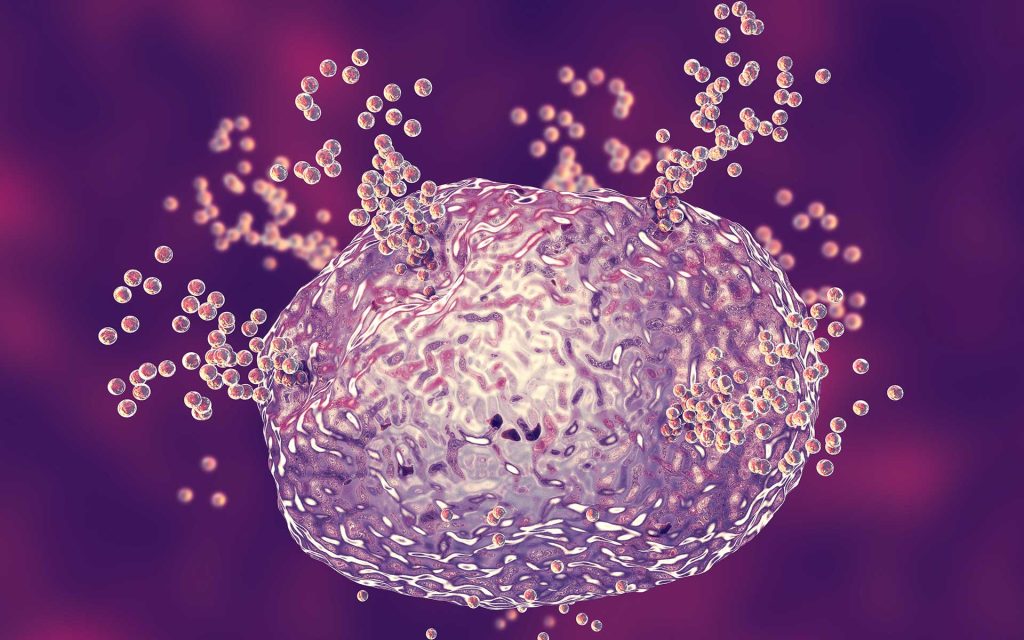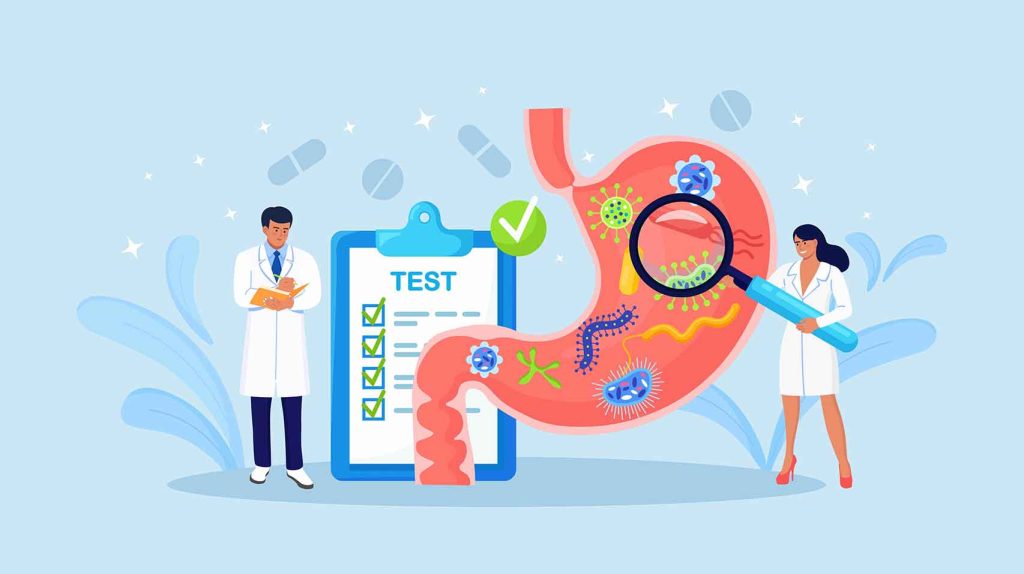Histamine intolerance is a complex and often misunderstood condition that can lead to a wide range of symptoms — from skin rashes and digestive discomfort to headaches and fatigue — many of which are frequently misattributed to other causes. Did you know that, while histamine plays a vital role in the body as part of our immune, digestive and nervous systems, problems arise when there is either too much histamine in circulation or a reduced ability to break it down? This is where gut health becomes crucial.
In Functional medicine, we look beyond symptom management to explore the root causes — and for those struggling with histamine-related symptoms, imbalances in the gut microbiome, inflammation, and nutrient deficiencies are often at the centre.
In this blog, we take a closer look at histamine intolerance from a functional perspective: what causes it, how it relates to gut health, the role of DAO enzyme activity, and what kinds of testing and nutritional strategies can help bring relief and balance.
Histamine intolerance is thought to affect approximately 1–3% of the population, although exact figures are hard to determine due to diagnostic challenges.
What Is Histamine and Why Does It Matter?
Histamine is a naturally occurring compound that acts as a chemical messenger in the body. It plays a central role in immune responses (such as inflammation and allergic reactions), helps regulate stomach acid for digestion, and also functions as a neurotransmitter in the brain. While histamine is essential to many bodily processes, problems arise when too much accumulates or the body cannot break it down efficiently.
In a healthy system, enzymes like diamine oxidase (DAO) help keep histamine levels in check by breaking it down, particularly in the gut. However, if this balance is disrupted — due to poor gut health, certain medications, nutrient deficiencies, or genetic factors — histamine can build up in the system and trigger a wide array of symptoms. Understanding how histamine works, where it comes from, and how it is processed in the body is key to identifying whether it may be contributing to your ongoing health concerns.
What Are The Symptoms Of Histamine Intolerance?
Histamine intolerance can mimic many other conditions, making it tricky to diagnose. However, common symptoms include:
-
Skin: Eczema, hives, flushing, itching
-
Digestive: Bloating, cramps, diarrhoea, nausea
-
Neurological: Headaches, migraines, sleep disturbances, irritability
-
Respiratory: Nasal congestion, sneezing, non-allergic rhinitis
-
Cardiovascular: Dizziness, palpitations, low blood pressure
Symptoms often flare after eating histamine-rich or histamine-liberating foods.

Book a Free Discovery Call
Discuss your health concerns with one of our expert practitioners and find out how personalised functional medicine can get your health on the right track.
What Is DAO (Diamine Oxidase)?
DAO, or diamine oxidase, is a vital enzyme found in the gut that plays a key regulatory role in maintaining histamine balance. Unlike other enzymes that work within cells, DAO operates extracellularly — meaning it works outside of cells, particularly in the digestive tract, to neutralise histamine before it enters systemic circulation. It acts as a front-line defence in the intestinal mucosa, breaking down histamine present in food or produced by gut microbes before it can trigger unwanted symptoms elsewhere in the body.
DAO activity is highly dependent on the health and function of the gut lining, where it is produced. When the intestinal barrier is compromised — due to chronic inflammation, infections, or certain medications — DAO levels can fall significantly, reducing the body’s ability to handle dietary or microbially derived histamine. Low DAO activity doesn’t just allow histamine to build up; it also reflects broader issues in gut integrity and digestive resilience, which often need to be addressed in tandem.
What Reduces DAO Production?
Several factors can reduce DAO levels or activity, including:
-
Gut inflammation (due to infections, food intolerances, IBD, parasites)
-
Leaky gut (increased intestinal permeability)
-
Nutrient deficiencies (e.g., vitamin B6, vitamin C, copper, zinc)
-
Medications (e.g., NSAIDs, antibiotics, antihistamines, antidepressants)
-
Chronic stress
-
Microbial imbalance (dysbiosis)
-
Genetic polymorphisms affecting DAO gene expression
Damage to the intestinal lining — where DAO is produced — is one of the most common contributors to low DAO activity and histamine intolerance.
Histamine-Producing Bacteria In The Gut
When DAO activity is reduced, the body becomes more vulnerable to the effects of histamine — not only from food, but also from internal sources. One of the most significant contributors to elevated histamine levels is the gut microbiome. Certain strains of intestinal bacteria are capable of producing histamine themselves by converting the amino acid histidine into histamine via an enzyme called histidine decarboxylase. In cases of microbial imbalance or dysbiosis, these bacteria can become overrepresented, adding to the overall histamine burden.
Common histamine-producing bacteria identified in stool testing include:
-
Morganella morganii
-
Klebsiella spp.
-
Proteus spp.
-
Citrobacter spp.
-
Enterobacter spp.
-
Escherichia coli (certain strains)
-
Pseudomonas spp.
-
Lactobacillus buchneri (a rare strain)
Histamine Intolerance vs Mast Cell Activation Syndrome (MCAS)
Although symptoms often overlap, histamine intolerance and MCAS are distinct conditions.
-
Histamine Intolerance (HIT) is usually due to excessive histamine load combined with impaired degradation (often linked to low DAO).
-
MCAS is a dysregulation of mast cells, which release histamine and other mediators inappropriately, even without dietary triggers.
Key differences:
-
MCAS often involves multiple organ systems and chronic symptoms without food-related patterns.
-
HIT symptoms tend to follow histamine-rich meals and may improve with diet and DAO support.
-
MCAS may require mast cell stabilisers or H1/H2 antihistamines, while HIT typically responds to dietary and gut-based interventions.
A clear diagnosis is crucial for choosing the right strategy.
Clinical Considerations: Children, Eczema & Behaviour
Histamine intolerance can also affect children, particularly those with eczema, food sensitivities, or behavioural symptoms. In these cases, underlying gut imbalances — such as reduced DAO activity or elevated histamine-producing bacteria — may be contributing to both digestive and non-digestive issues.
A history of antibiotic use, early infections, or a restricted diet can disrupt the gut microbiome and impair histamine breakdown. Addressing gut health through targeted diet, supplementation, and, where appropriate, functional testing can help reduce symptoms and support long-term wellbeing in sensitive children.

Functional Testing For Histamine Intolerance
Because histamine intolerance can present with a wide range of symptoms that overlap with other conditions, it’s not always easy to identify without proper testing. Functional medicine testing allows us to look beneath the surface and understand the factors contributing to histamine overload — whether it’s reduced DAO activity, gut inflammation, dysbiosis, or nutrient deficiencies.
At Nutrition Diets Clinic, we use a combination of targeted tests to assess gut health, microbial balance, and enzyme function. This helps us build a clearer picture of what’s driving your symptoms and allows us to tailor a treatment plan that addresses the root cause.
1. Comprehensive Stool Test
-
Identifies histamine-producing bacteria
-
Assesses gut inflammation (e.g., calprotectin, SIgA)
-
Screens for parasites, pathogens, and dysbiosis
2. Histamine Intolerance Test
-
Analyses genetic variants and nutrient cofactors involved in histamine metabolism
-
Assesses potential impairment of Diamine Oxidase (DAO) and Histamine-N-Methyltransferase (HNMT) activity
-
Identifies contributing factors such as poor methylation, nutrient deficiencies, and enzymatic blockages
-
Helps guide personalised support for histamine breakdown, including diet, supplementation, and lifestyle changes
3. DAO Serum Test
-
Measures circulating DAO enzyme levels
4. Organic Acids Test (OAT)
-
Assesses microbial overgrowth
-
Highlights nutrient deficiencies that may impair DAO function
5. Food Sensitivity Testing
-
Identifies dietary triggers that worsen inflammation and histamine load
For more information on our range of health tests, personalised nutrition and lifestyle plans and targeted supplement protocols tailored to your needs by our practitioners visit our How It Works page.

Book a Free Discovery Call
Schedule a consultation with our functional medicine expert to uncover the root cause of your symptoms and receive a tailored treatment plan.
YOUR HEALTH. YOUR CHOICE.
Histamine intolerance is often a sign of deeper imbalances in the gut. Whether it’s an overgrowth of histamine-producing bacteria, inflammation damaging the gut lining, or nutrient deficiencies impairing DAO function — a root-cause approach using functional testing is key.
At Nutrition Diets Clinic, our functional medicine approach goes far beyond generic advice by considering your unique genetic makeup, diet, environmental exposures, lifestyle factors, and health history to get to the root cause of your health concerns.
1) Expert one-to-one therapy
2) Personalised nutrition and lifestyle plans
3) Easy, at-home functional testing
Starting the journey towards improved health can feel daunting but our team of qualified professionals are here to provide you with expert guidance and support every step of the way.
We offer thorough clinical assessment and therapy via convenient online consultations. Getting started is simple and free. Take charge of your health today with our evidence-based strategies.
